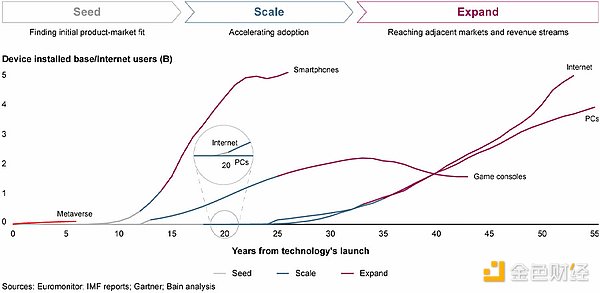Author: Consulting.us, Translation: Meta Universe Heart
According to Bain & Company’s report “Taking the Hyperbole out of the Metaverse,” the scale of the metaverse industry will reach $900 billion by 2030.
Although Mark Zuckerberg’s “Meta” metaverse project, which was released in the fall of 2021, including clumsy avatars and an immature ecosystem, is very interesting, Bain believes that the metaverse will not disappear.
However, the fully immersive virtual worlds depicted in “Ready Player One” and “Snow Crash” are still a long way off. In the near to medium term, the metaverse is still a series of decentralized interactive environments that are accessed through smartphones and computer screens.
- GameFi attracts ‘big spenders’, is the road to compliance in blockchain gaming just ahead?
- Meme coin is just an NFT without pictures.
- Metaverse to bring $20 billion business opportunities to the tourism industry
Although Zuckerberg hyped up this concept two years ago, simplified versions of the metaverse have existed in video games for decades. The most popular games today, such as “Fortnite,” “Roblox,” and “Minecraft,” allow users to create virtual characters and worlds.
Bain believes that the metaverse is still in its early “seed” stage and is likely to remain so for at least the next 5 to 10 years. To scale, there must be compelling use cases, and the maturation of these use cases takes time: smartphones and game consoles took over 10 years to move beyond the early stages of development, while the internet and personal computers took nearly 20 years.

In order to profit from the estimated $700-900 billion market in 2030, companies must enter early. The eventual winners usually emerge in the early stages of development, such as Microsoft and Apple in the personal computer field, Nintendo in the video game field, and Apple in the smartphone field.
Companies can take a vertical approach (spanning multiple parts of the technology stack) or a horizontal approach (focusing on a single layer). Meta is taking a leading position in vertical integration, combining hardware, app stores, and virtual content in an effort to achieve widespread user adoption.
Apple has also adopted a vertical strategy, announcing in June of this year the launch of a high-priced mixed reality headset that uses Apple-designed chips and operating systems, and is connected to the Apple application ecosystem.
NVIDIA and Epic Games are taking a horizontal approach, respectively providing chips and content creation tools, and many companies in the metaverse space are using these tools.
Bain believes that it is unlikely that there will be a unique large-scale metaverse platform; instead, existing consumer and enterprise applications will become more immersive. Companies have a strong incentive to maintain “walled gardens” to gain profitable proprietary datasets and purchases within their ecosystems.
In the estimated market of 2030, virtual experiences will account for 65% market share, followed by application stores and operating systems (10%), devices (10%), computing and infrastructure (10%), and content creation tools (5%).
Like what you're reading? Subscribe to our top stories.
We will continue to update Gambling Chain; if you have any questions or suggestions, please contact us!